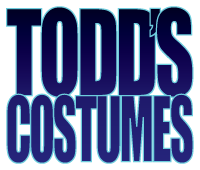Indiana Jones ROTLA Shirt Run Update 4/18/2024
Posted by Todd Coyle on 18th Apr 2024
The April 15th deadline has passed without reaching the goal. What now?
Although the pre-sales fell short, I decided I was probably expecting too much. I can proceed with 56% and hope to make a profit down the road.
I was planning to update you much sooner with photos of an actual prototype. However, the prototype was a failure, and I'm making a second, which will probably be finished today. But I decided I can't keep you waiting.
I will proceed with the run. The prototype should be finished today, then laundered a few times to evaluate the pattern and interfacings. Once these are confirmed, I will send this information to the manufacturer and receive an estimated completion date, which I will share with you. The order will be placed, and the shirts will remain on preorder status until the run is sold out.
You may be asking, "Why has it taken 3 weeks to make a prototype? I thought these shirts were going to be the same as your old shirt?"
Reason Number One: Yes and no. I am keeping the things that were acccurate about the old shirt, and correcting the things that were not. Although the old shirt had a lot of things right, such as collar, width of button placket and pleats, size of yoke, cuffs, sleeve placket, etc. However, there were things I can now see were slightly off, such as shoulder width, epaulet length, shirt sleeve ease (shoulder and cuff), shirt length, cuff stitching, shoulder stitching, side gussets, fabric color and weave, button color and style/size, button spacing, number of buttons, pocket size and placement, and pleat construction method. Very small details no one but the most obsessed would notice, for sure.
Reason number two for the slow progress is that there is a balance to be struck between a 100% accurate museum piece and a practical, flattering shirt for wear by average people. The screen used shirt was carelessly constructed, intentionally or unintentionally. This is especially true of the pockets. They are not crisp, square, straight, and even. I have been asked by several customers to try to copy the hand-made asymmetry. I intend to try, but I'm not sure how successful this will be. I have created separate right/left patterns for pockets, pocket flaps, and pocket placement marks. It remains to be seen how "precisely imprecise" the shirt makers can be. The other issue is the fit. Harrison Ford was thin. I don't know any adults that thin. I can't split such a small order of shirts into six sizes times two cuts - twelve variants total. These are hard decisions (and risky).
Reason Number Three: Nothing is ever easy for me. (Good news: I did source some prototype fabric from the LA garment district that is almost perfect.) However, it is a pain to sew, and eventually my fancy table top sewing machine broke and ruined the shirt. My backup machine is broken, worn beyond repair. My commercial Juki machine was broken during the move here (I haven't used it for a few years) and it doesn't do zig-zag anyway. I borrowed a table top Husqvarna from a friend, but there's no manual and its Swedish and I can't figure out the controls. Blah, blah, blah...so many problems. Also, It took me two whole weeks to draft the patterns in Adobe Illustrator, which kept crashing.
What do you think? Old Coyle's Shirt vs Improved Coyle's Shirt? Perfect Pockets vs Crude Pockets? Tapered Waist vs Wide Cut? I would appreciate your feedback! Send Me an Email!
Now back to battle with the Husqvarna...
